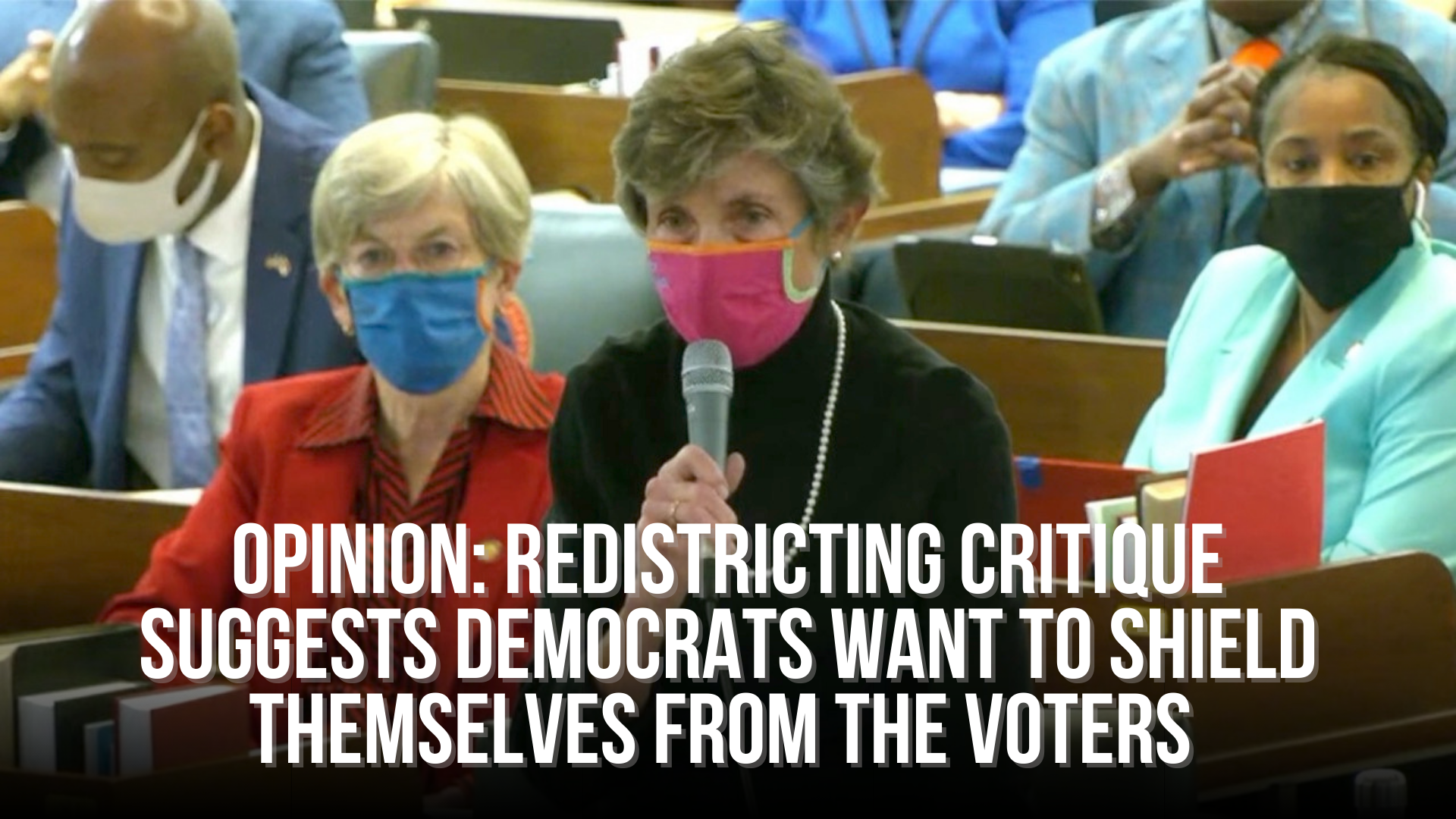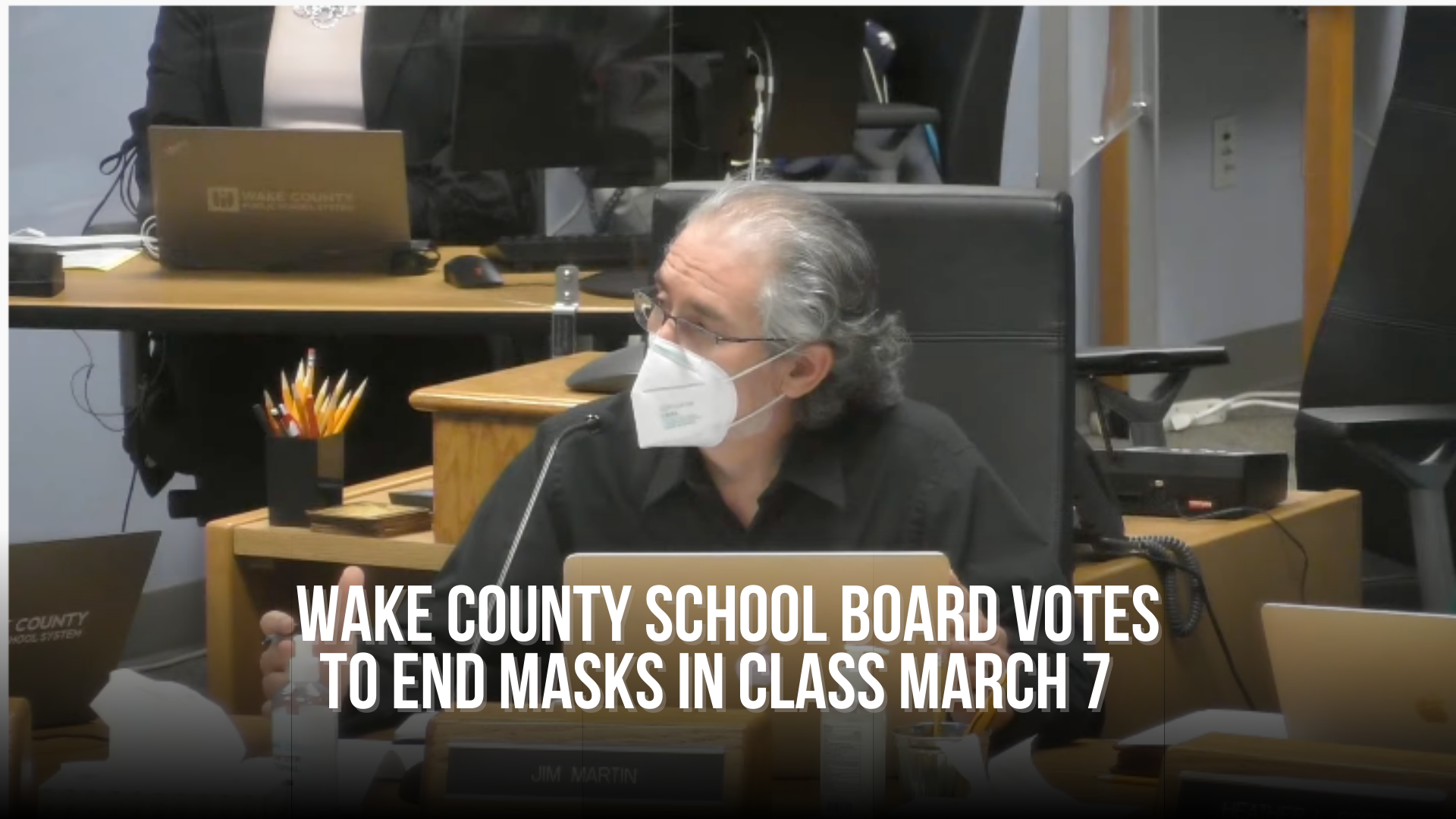OPINION: Redistricting critique suggests Democrats want to shield themselves from the voters
File image attached of Rep. Pricey Harrison, D-Guilford speaking on the floor of the N.C. House. Image from YouTube
By Mitch Kokai, John Locke Foundation
Critics accuse North Carolina’s Republican-led General Assembly of drawing election districts that would shield GOP majorities from the impact of voters’ choices.
It’s ironic, then, that a leading criticism of the latest congressional map is its inability to shield Democrats from the likely impact of the 2022 election.
Courts ought to keep the Democrats’ partisan goals in mind as they determine whether the map meets new standards of fairness. A three-judge panel must issue a ruling Wednesday for or against the new map.
“While I appreciate that this was represented as a potential 6-4-4 map, there are some that say that it’s really a 10-4 map in a good GOP year,” said Rep. Pricey Harrison, D-Guilford, during last week's state House debate about the congressional map. “From my perspective, it’s more like an 8-3-2 map, even in a good year for Democrats.”
Harrison referenced analysis from Dave Wasserman of the Cook Political Report. “He tweeted that this map is still quite a gerrymander,” Harrison said. “Using the 2020 statistics, it would be a 9-5 map, but likely 10-4 in 2022.”
Harrison’s comments require context.
North Carolina’s current delegation to the U.S. House of Representatives features 13 members. Republicans outnumber Democrats, 8-5. Population growth during the last decade helped the state secure a 14th seat in the U.S. House, starting in 2023. With the latest census data in hand, the Republican-led General Assembly incorporated a new 14th District into an updated congressional election map. Legislators approved the map last fall.
Democrats and their ideological allies sued immediately. They claimed the map would guarantee at least a 10-4 GOP advantage in the U.S. House delegation, and possibly even an 11-3 majority. Given the two major parties’ consistently close split in statewide election contests, a large advantage for Republicans amounted to an unconstitutional partisan gerrymander, critics said. Judges should throw the map out.
Critics downplayed evidence from their own experts that suggested North Carolina’s political geography would produce a map favoring Republicans under almost all circumstances. One expert produced simulations suggesting that three out of four neutral maps would give Republicans a 9-5 edge, with another 9% boosting the advantage to 10-4.
A trial court rejected the critics’ arguments. But Democrats on the N.C. Supreme Court reversed course. In a 4-3 party-line ruling, the high court tossed the map. Justices gave state lawmakers two weeks to try again.
When lawmakers returned with a new congressional map, Republicans touted it as likely to elect six Republicans and four Democrats. The other four seats would be so competitive that either major party could win them. That’s the 6-4-4 split Harrison referenced in her comments last week.
Note that she contrasted a “6-4-4 map” with a “10-4 map in a good GOP year.” But that's a distinction without a difference.
Under the Republicans’ own arguments, four seats would be likely to generate stiff competition in each election cycle. That means results would be likely to swing from an 8-6 Democratic advantage in the best of Democratic years to a 10-4 Republican advantage in the best of Republican years.
Particular circumstances of each election cycle, not to mention the strengths and weaknesses of individual candidates, could tilt the final electoral tally toward one party or the other. That’s the goal map critics claim to have been pursuing.
Note that the possibility of an 8-6 Democratic advantage in a “blue wave” year flies in the face of the built-in Republican advantage identified by map critics’ own experts. Yet the prospects for securing an 8-6 majority, despite built-in geographic disadvantages, do not appease Harrison and her allies.
In her follow-up comment, she suggests “2020 statistics” would produce a 9-5 Republican map. That should surprise no one. Election critics’ own experts suggested a 9-5 GOP majority as the most likely outcome of maps drawn with neutral criteria.
The same map would be “likely” to produce a 10-4 Republican advantage this year, Harrison said. No elections have been conducted in 2022, and no hard data exist to bolster the argument. So Harrison must be alluding to mountains of anecdotal evidence suggesting that this year is shaping up to be a strong Republican showing.
But a 10-4 result favoring Republicans in a strong Republican year is entirely consistent with the Republicans’ argument defending their map. The 2022 election cycle looks good for the GOP. When political winds shift again, a 6-4-4 map could produce different results. These results could be much more favorable for Democrats.
Critics like Harrison who are unwilling to accept a 10-4 Republican advantage in a strong GOP election cycle aren’t actually seeking fair maps. They’re seeking maps that insulate the Democratic Party from an electoral shellacking.
While that’s a reasonable goal for partisans seeking electoral advantage, it's not a factor that should persuade a judge. If election maps shouldn't protect Republicans from the electorate, there's no good reason to offer that same sort of protection to Democrats.
Mitch Kokai is senior political analyst for the John Locke Foundation.



